
The tree in the foreground is a plum and unfortunately I don’t remember the variety. However, I do know this particular variety is a self pollinator. Typically, with plum trees you should have at least two that are no further than 50 feet apart. This allows a cross pollination and can result in higher yields. Plum trees are a perfect Colorado foothill fruit tree due to the fact they’re hardy and can withstand late frost (much more so than the peach tree).
The tree in the background is a Montmorency Cherry – more on that later.
Planting a Plum Tree in Colorado
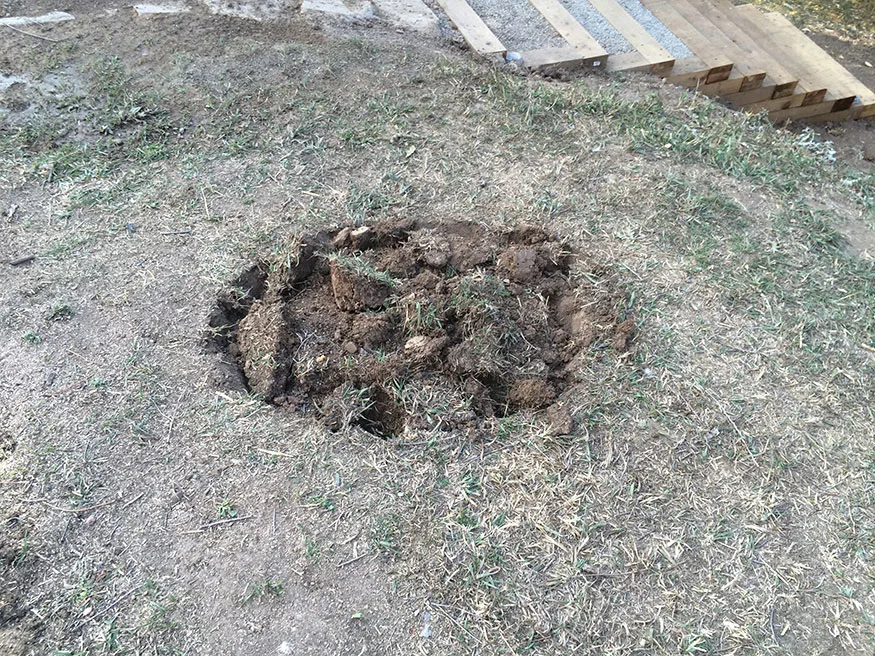
Tools needed to break up the hard soil:
- Pick Axe (cut through the dirt and start your hole)
- Shovel (move the dirt)
- Rototiller (break up the dirt to a finer soil) – This is needed in the foothills of Colorado – the soil is going to break apart like a rock – once you break it up further with the tiller, it’ll be much easier to manage).
- Blade (remove the container and score the root ball).
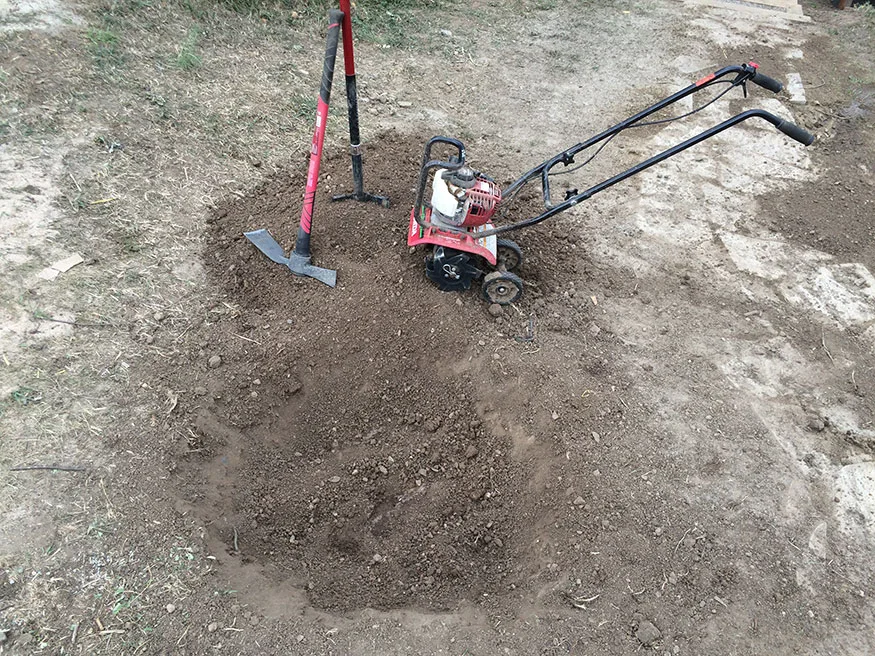
Breaking up the soil can be tough! Use the pick axe to make life a little easier.
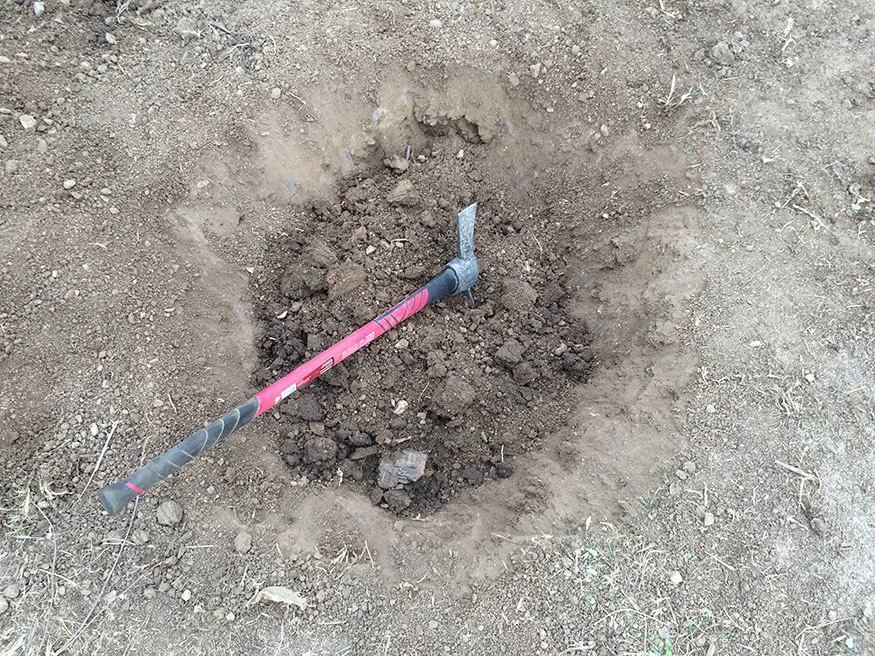
The tiller allows you to breakdown the soil further (this is important).
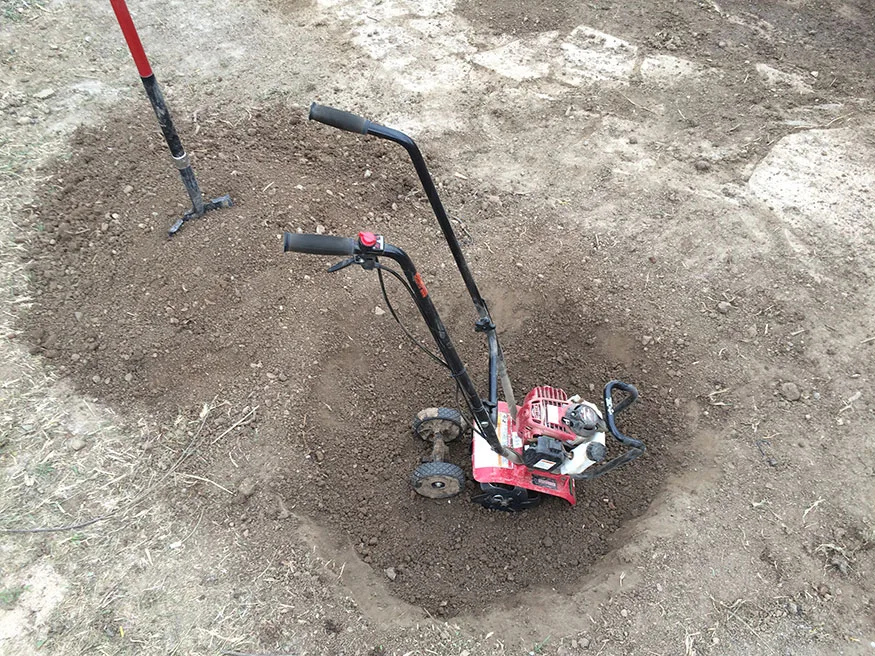
Use a blade to cut open the container (this makes it easier to remove the root ball).
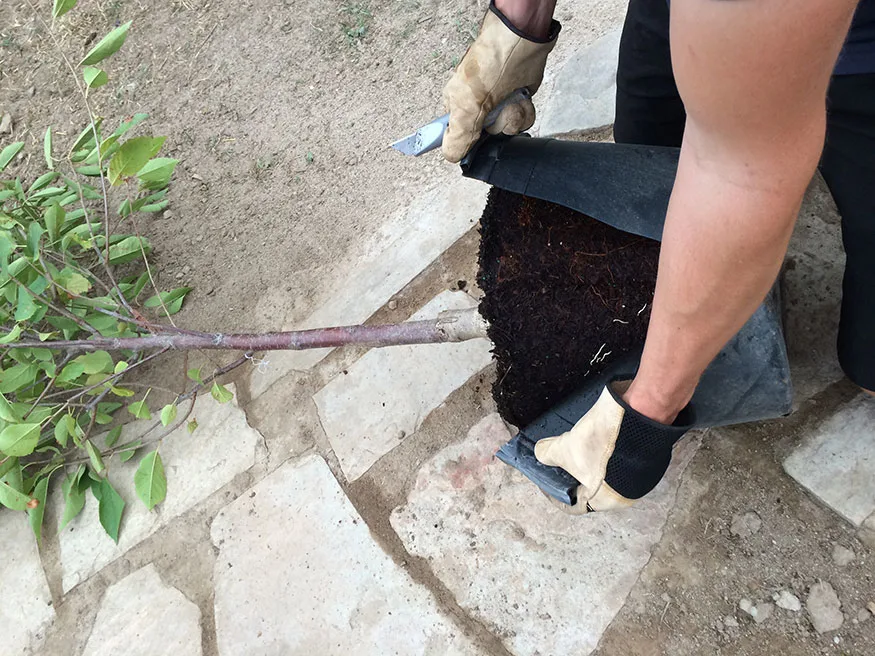
Once you have the root ball removed from the container you’ll want to score it with a blade or saw. Score 1 to 1.5 inches deep. It’s important to NOT plant a tree until you open up the roots to grow outward and down.
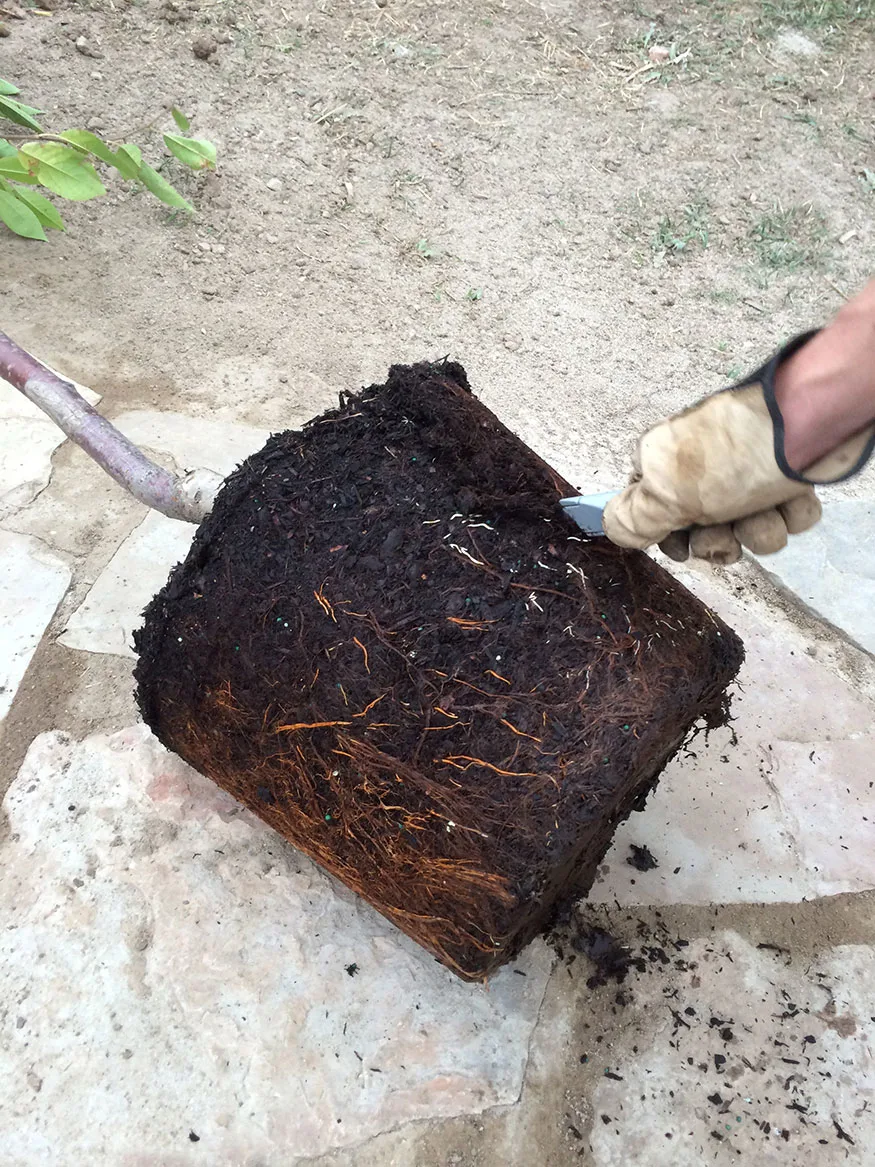
Mixing in Humus is a good idea – Humus is decomposed organic matter. Think of a fertile forrest floor, Humus is providing something lacking in the current soil (as-is).
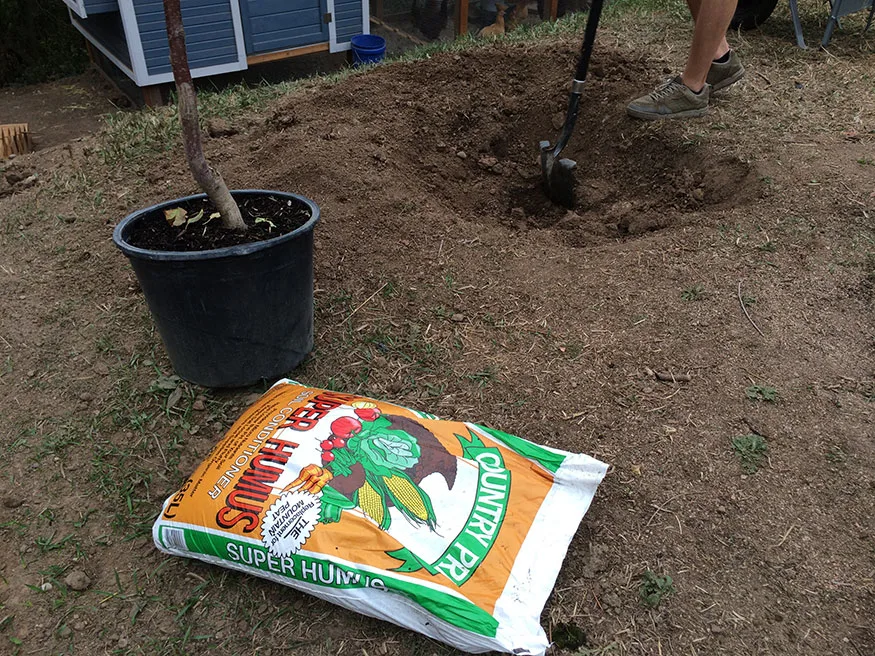
Mix the Humus and broken up soil when filling.
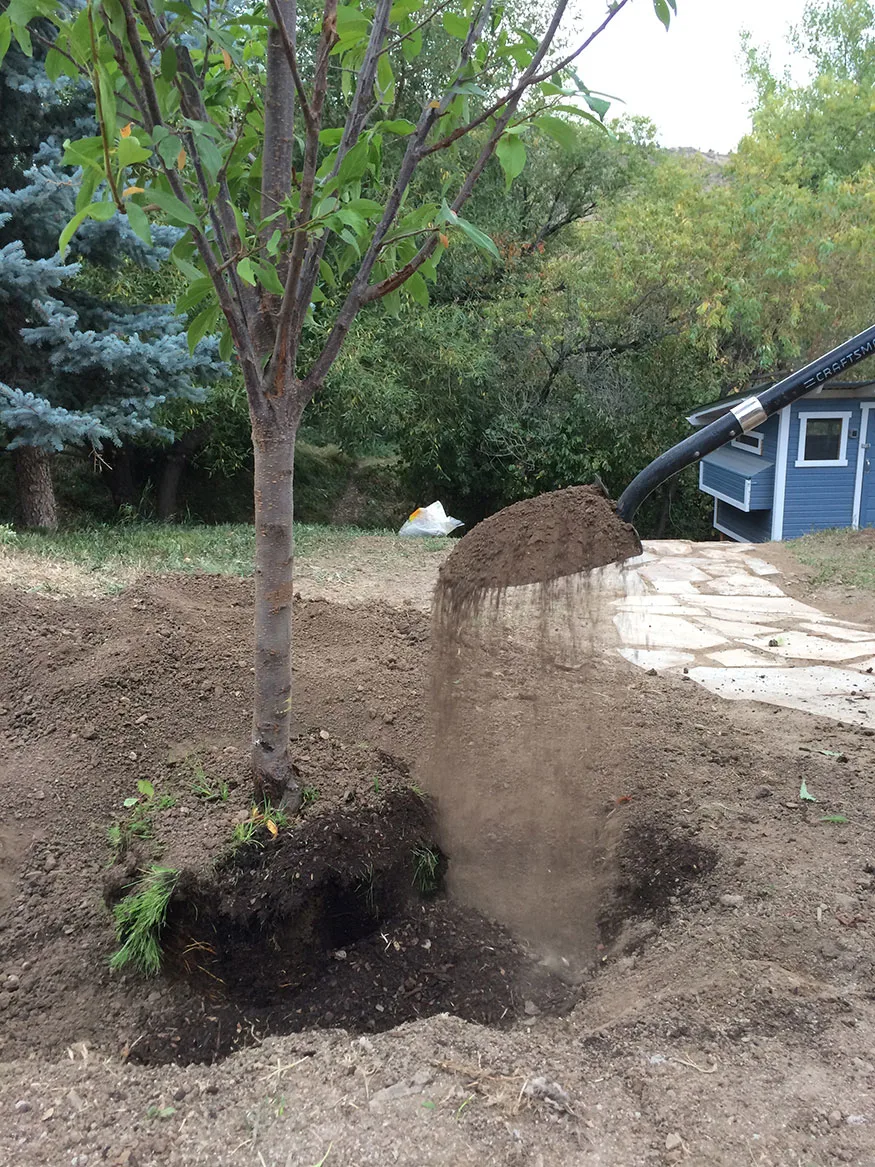
How deep do you plant a fruit tree?
- Leave a bowl around the root ball to allow irrigation water to settle in the first year.
- Leave the root collar a little above the ground level.
- Your bowl/hole should be 2-3 times as wide as the root ball.
- DO NOT dig too deep – digging deeper isn’t better.
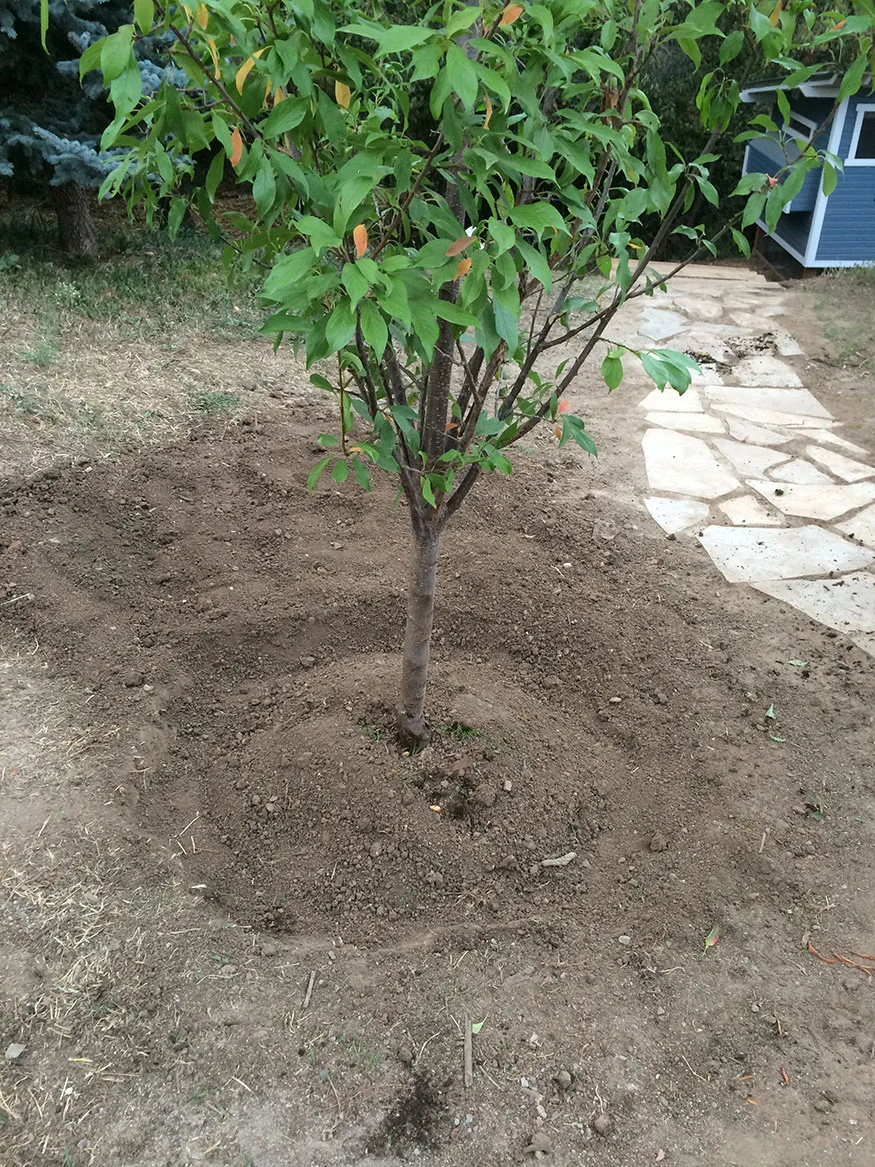
Build a trough around the bowl to help with irrigation in the early stages of the tree. We want the roots to extend out and they will if there’s ample water outside of the root ball. This is only important during the first few months.
Wildlife and Fruit Trees
Deer (in the foothills of Colorado) are a serious problem when trying to cultivate a healthy fruit tree or orchard. You’re going to need to take extreme measures during the early stages of your tree to ensure deer don’t nibble away all of your progress.
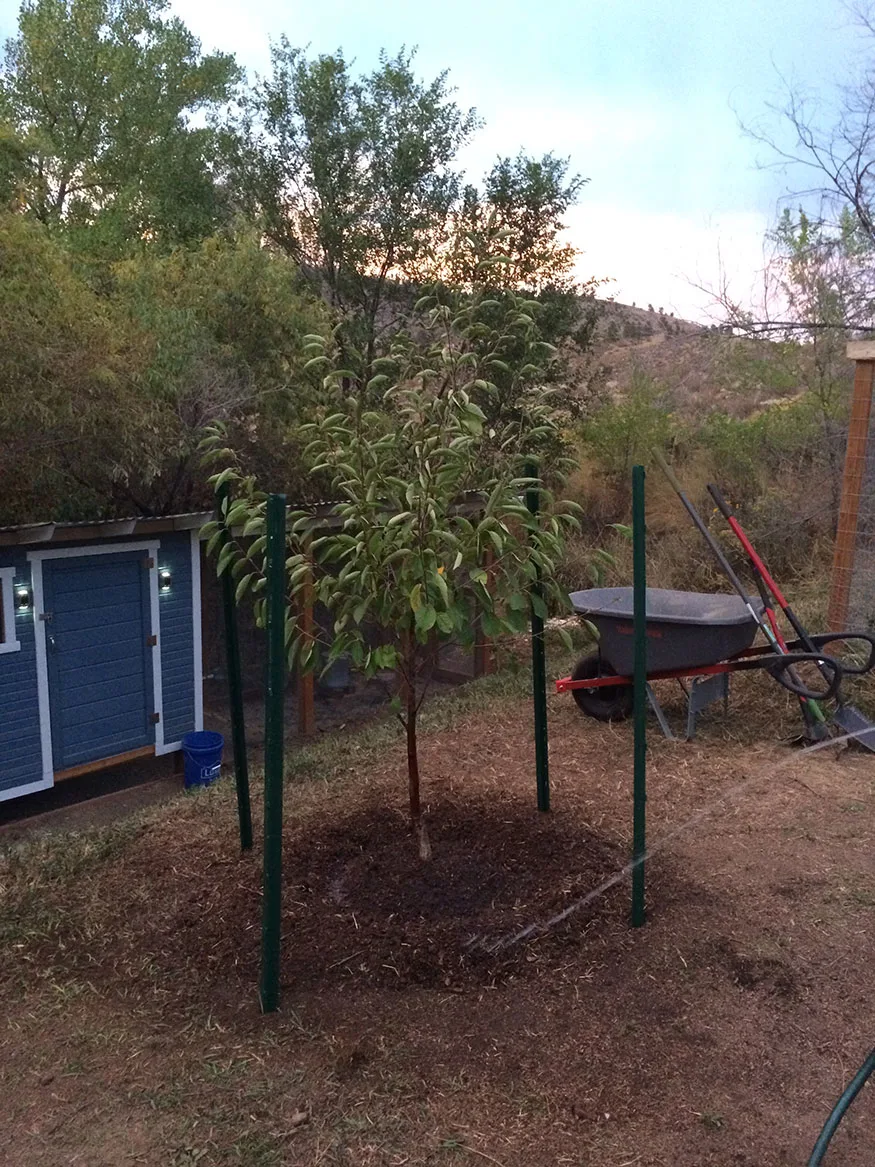
The tree above is a Montmorency Cherry – this is another great option for Colorado – three reasons:
- Cold hardy and can withstand the unstable temperature fluctuations.
- Does not require a pollinator tree to produce fruit. However, fruiting will be improved with a pollinator (2nd or multiple trees).
- The taste of the cherries are bitter but not too much… it’s a great flavor for adding to recipes.
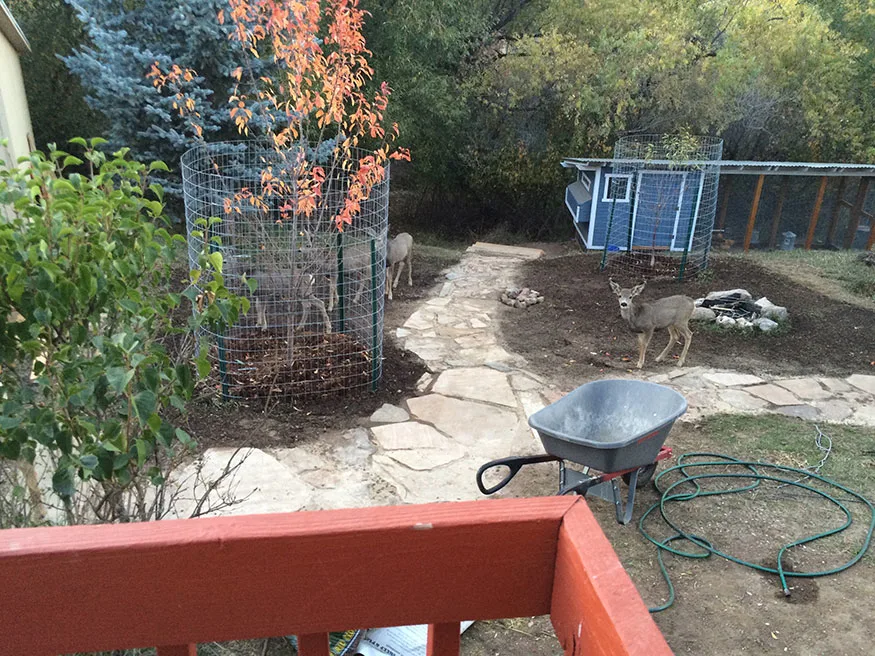
Sorry little Mulies but these leaves aren’t for you.
Final Tips for Planting a Fruit Tree in the Colorado Foothills
- Plant your fruit trees in the spring.
- Plant your fruit trees in a location that provides a lot of direct sun.
- Ensure your fruit trees are not in a low elevation or drainage.
Let’s fast forward a couple of years – the trees have been producing nicely each season and we’re very happy we planted them. And we don’t have to have the surrounding deer fence! Score!
Late May Rainy Day
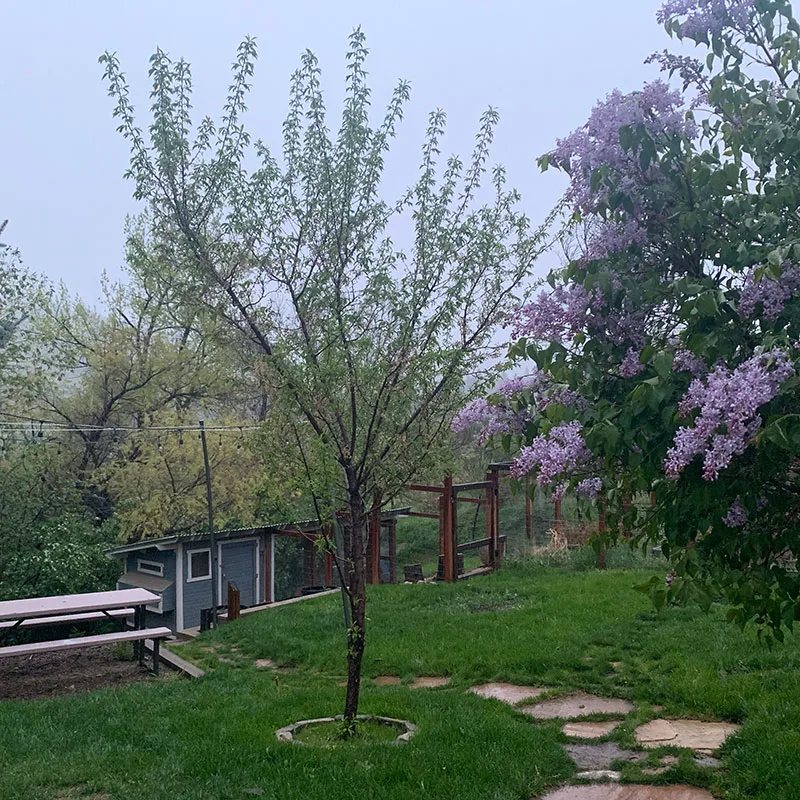
Early October Sunny Day
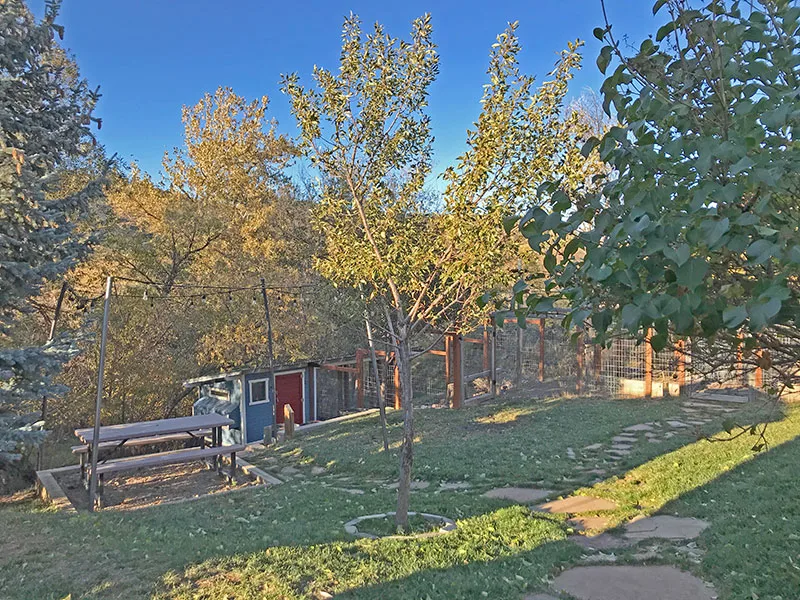

Carmen Turner
Thursday 23rd of July 2020
Wonderful! Your back yard looks like a perfect garden now. I think you are an inspiration for all the people who want to have a small startup. To be honest I am following you. I have also built a small garden in the back yard and that messy pathway. Thanks for sharing the useful tools and tips to plant the trees.